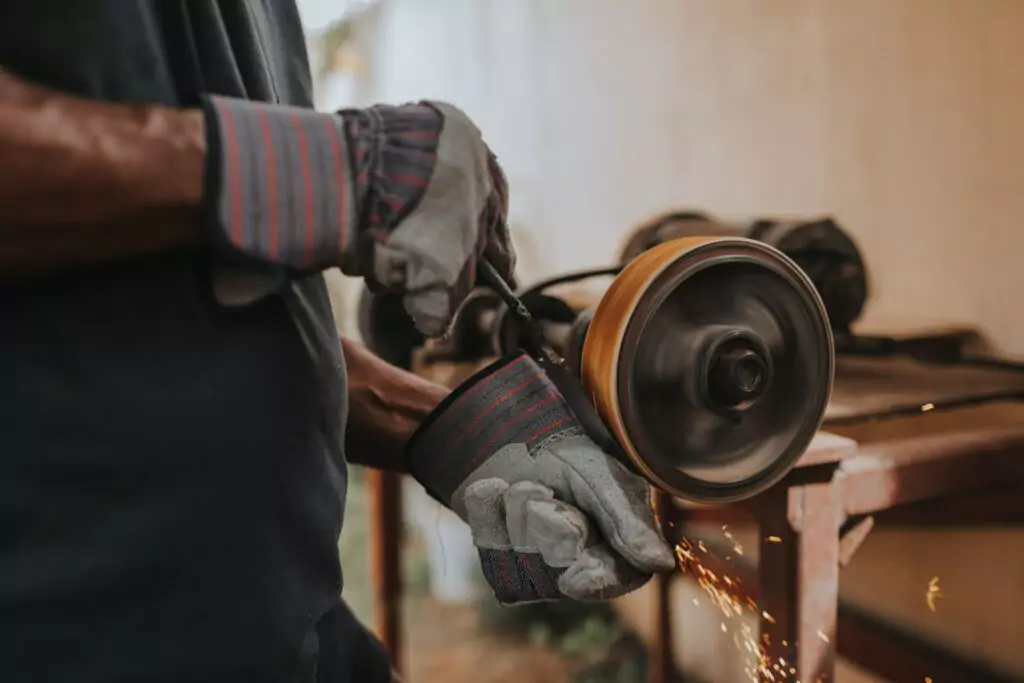PPE & Safety Within Workplaces

Personal protective equipment (PPE & Safety) is designed to protect and safeguard employees against possible injury. PPE may include eye protection, ear protection, head protection, face shields/masks/respirators, gloves and safety shoes or boots. PPE protects workers from hazards such as cuts or abrasions from materials that might be sharp or rough; atmospheric such as dusts, biological hazards such as bacteria or viruses, chemical exposures than can cause burns or skin irritation, electric shock, fire/flames etc.
Let’s look at some of the most common and important PPE & Safety equipment:
1. Eye Protection
Eye protection is important for obvious reasons: it protects your eyes from dust, dirt and other particles; from UV light, from heat, flying objects such as sparks, splinters and chips of metal; from chemicals and vapours that could be harmful if not properly controlled.
It should also protect you against the effects of radiation (such as lasers or x-rays) if you’re working with them. And in some cases, it’s worth using eye protection because even though there aren’t physical dangers associated with these things, they can still cause damage to your vision – for example prolonged exposure to sunlight will cause sunburn which then leads to cataracts later in life.
In addition to all that there are some specific situations where wearing eye protection is essential: when working around water or liquids, such as oil/solvent/chemicals etc., when working with impact tools like hammers or metalworking, while grinding metal pieces together with a grinder.
2. Hard Hats
Hard hats are designed to protect the head from impact, falling objects and electrical shock. Hard hats are made of a plastic shell with an energy-absorbing liner inside. The liners used in these helmets are designed to absorb impact forces transmitted through the head by deforming in response to an applied force.
3. Chemical Goggles
Chemical goggles are used to protect your eyes from chemicals, such as acids, alkalis and solvents. They should be worn whenever you are working with corrosive chemicals.
Chemical goggles should also be worn when handling any type of chemical that may splash in the eyes or when using compressed air to clean up spills.
4. Ear Protection
Ear protection is used to reduce the risk of hearing loss. It can be used for different purposes, such as construction and manufacturing. There are many different types of ear protection on the market today:
- Earplugs: These are small, soft devices that fit inside the ear canal and press against it to block sound waves from entering your ears. Earplugs can be custom moulded or non-customised (also known as “foam” earplugs).
- Earmuffs: These form around both sides of your head and cover the ears completely with padded material; they provide better protection than regular earplugs because they reduce noise levels by 15 dB or more. However, they’re bulky, heavy, and hot in warm weather – and may make communication difficult if other workers need instructions from you while you’re wearing them.
Why is PPE important within a workplace?
PPE is a vital part of the workplace safety. It’s important to understand that PPE is designed to protect and safeguard employees against possible injury by providing protection from certain hazards.
The PPE equipment can help employees avoid injury and illness, and it’s good for you and your company too because it helps keep workers on the job and reduces medical expenses. There are many different types of PPE available depending on what kind of job they do, but all must comply with the correct regulations and requirements.
Here at Hydraulic Megastore, we can get hold of a vast range of Ancillary products which includes a selection of PPE & Safety products – therefore if you need to get topped up on those well needed safety equipment, shop online today or contact us on 01472 255928 or email hello@hydraulicmegastore.com.
